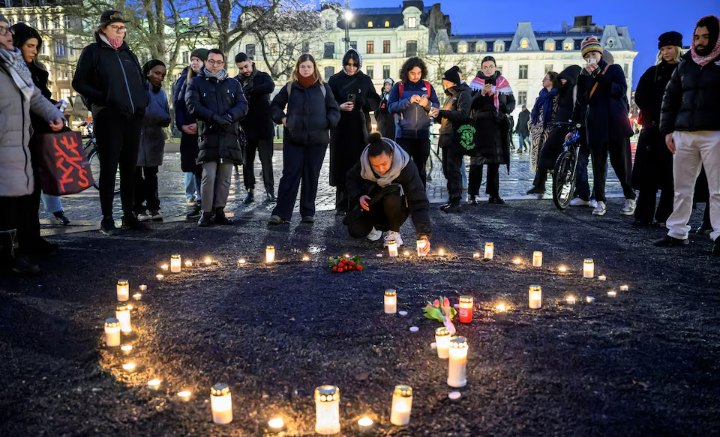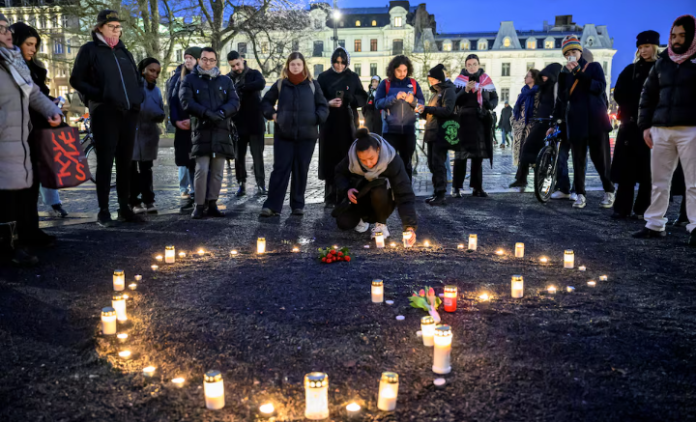Sweden is reeling from its deadliest mass shooting in history after a gunman opened fire at an adult education center in Orebro, killing 10 people before turning the weapon on himself. The attack, which took place on February 4 at Campus Risbergska, has left the nation in mourning, as authorities and citizens search for answers.
At midday on Tuesday, a solemn silence fell across the country as government offices, schools, and workplaces paused to honor the victims. In Orebro, thousands gathered in the city’s central square despite freezing temperatures, showing solidarity with the victims and their grieving families.
A Nation in Shock
The shooter, identified as 35-year-old Rickard Andersson, was described as an unemployed loner with little social contact. He had previously attended the school but had no known links to criminal organizations or extremist groups.
Survivors of the attack recalled moments of terror, with many barricading themselves in classrooms as gunfire echoed through the halls. Police confirmed that over 50 shots were fired during the rampage. Some victims were found in corridors, making the evacuation even more traumatic.
Hellen Werme, one of the students, described how she narrowly escaped. “We were like a little family. I had just stepped out for training when the shooting started. I survived by hiding under a bed for two hours,” she told reporters.
No Clear Motive Yet
Authorities are still piecing together Andersson’s motive. Investigations have not yet revealed any ideological or racial motivation, but many in Orebro’s immigrant community remain fearful. Out of the 10 victims, eight were reported to have immigrant backgrounds, with roots in Syria, Somalia, and Bosnia.
The local Muslim community has since increased security at mosques, and students at the school are wondering whether they were targeted based on their ethnicity. “I’m very scared,” said Fatouma, a student whose classmate was injured in the attack. “Why would anyone do something like that?”
Sweden’s Response

The attack has ignited debates on gun control and security policies in Sweden. Authorities have confirmed that Andersson had recently purchased ammunition and smoke grenades and had at least one firearm at home. However, there was no prior indication that he was planning such a violent act.
In Stockholm and other cities, public transport and workplaces came to a standstill during the national moment of silence. “You don’t think something like this could happen here,” said one resident. “We hear about mass shootings in the U.S., but not in Sweden.”
As Sweden grieves, the nation is left with painful questions: Could this have been prevented? How can such tragedies be avoided in the future? The investigation continues, but for now, the focus remains on supporting the victims’ families and ensuring that those affected receive the help they need.



